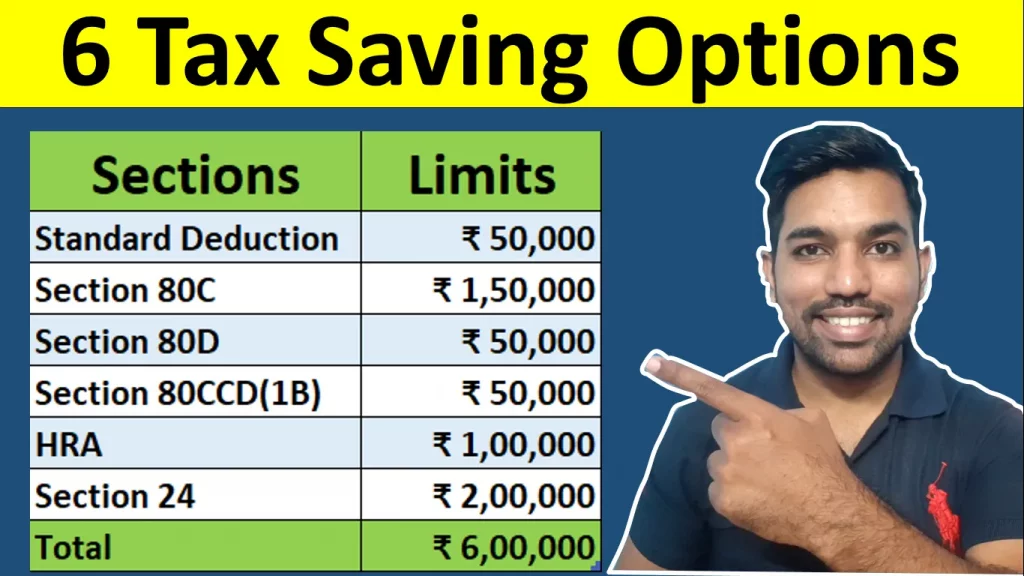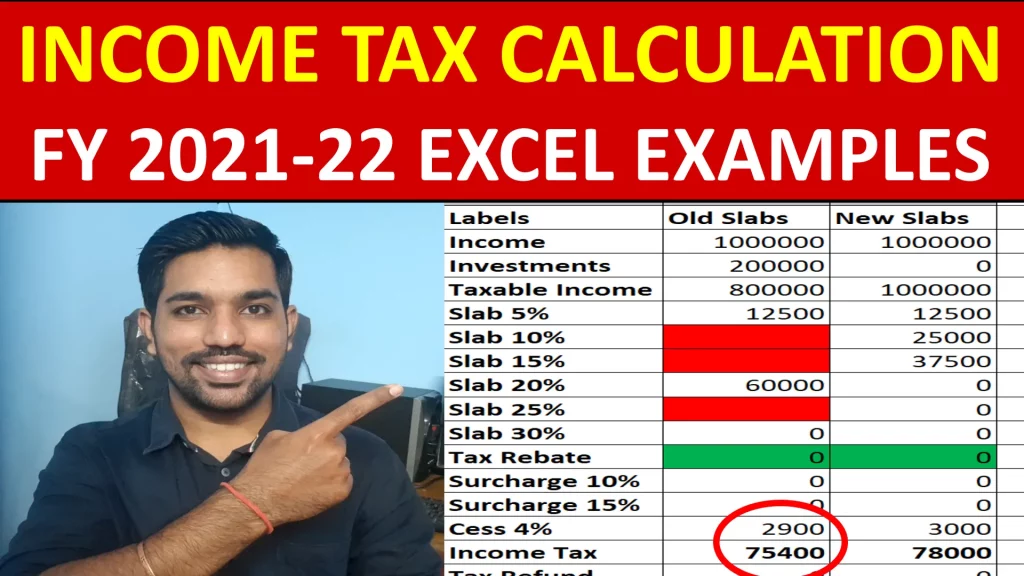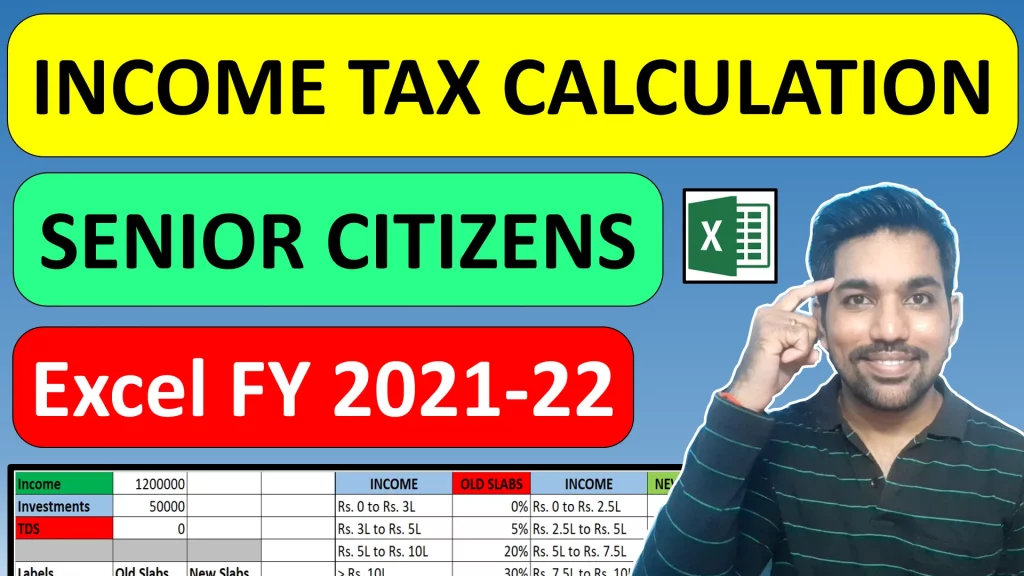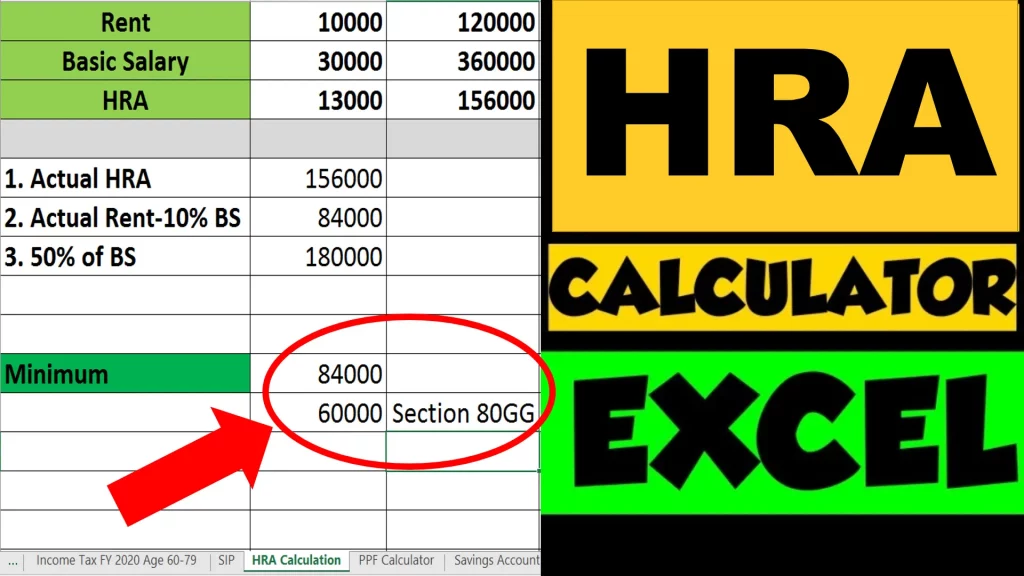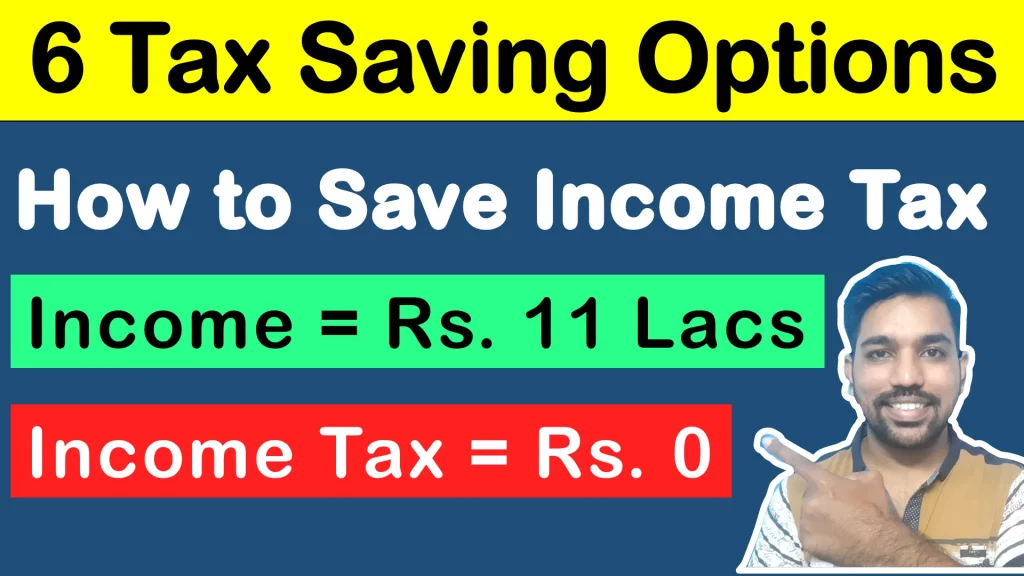There are multiple tax saving options using Old Tax regime that can help you to reduce taxable income and hence your tax liability will be reduced. You can save income tax using old tax regime since it provides multiple sections including Section 80C, Section 80D, Section 80CCD(1B), etc. reduce your taxable income with old tax regime, apart from standard deduction.
Please note that majority of these sections are not available with new tax regime, so you need to choose old tax regime to help you save income tax.
Let us understand income tax saving options in detail.
How to Save Income Tax Video
Watch below video to understand 6 tax saving options with old regime with income tax calculation examples:

Watch more Videos on YouTube Channel
1. Standard Deduction
- Standard Deduction is a flat deduction of Rs. 50,000 that was introduced in Budget 2019 in Old Tax Regime
- In Budget 2023, that will be applicable from FY 2023-24, Standard Deduction will be also available in New Tax Regime as well.
- So if you are salaried employee or pensioner, you will get standard deduction of Rs. 50,000 in both Old and New Tax Regimes from FY 2023-24 onwards.
- It is important to note that you must reduce this standard deduction of Rs. 50,000 from your gross income as the first step towards calculating your income tax.
WATCH: Income Tax Calculation on Salary Payslip
2. Section 80C
Another important and popular section to save income tax is Section 80C.
Section 80C has multiple options where you can save income tax based on your investments and expenses and the limit is Rs. 1,50,000 in FY. Some of them are listed below:
- EPF (Employee Provident Fund)
- PPF (Public Provident Fund)
- 5 Year Fixed Deposits
- ELSS Mutual Funds (Equity Linked Saving Scheme)
- Home Loan Principal Amount Repayment
You can select multiple options under Section 80C and invest up to Rs. 1,50,000 to claim deductions and save income tax or you can even invest in one option and claim the entire maximum limit.
Once you invest the required amount, either the invested amount or Rs. 1,50,000 (whichever is lower) need to be reduced from gross income to reach taxable income on which income tax will be calculated.
Please note that Section 80C options are available only in old tax regime. New tax regime does not allow this deduction.
ALSO READ: Full list of Section 80C Deductions
3. Section 80D
Section 80D belongs to Medical insurance premiums that you pay.
In today’s world with several number of diseases, it is important to have medical insurance to save yourself from spending your hard earned money into curing a critical disease.
The aim of taking medical insurance is to get the hospital expenses from the insurance company when someone in your family (or you) is going through a critical disease and needs attention in hospital.
In such case, if you have medical insurance the the patient is insured, the hospital expenses are handled by insurance company.
Section 80D limits depend on your (and insured) age. Below are the details about Section 80D limits:
| Person Age | Limit |
|---|---|
| Age up to 60 Years | Rs. 25,000 |
| Age above 60 Years (Senior Citizens) | Rs. 50,000 |
So if your age is below 60 years, you get maximum deduction of Rs. 25,000 under Section 80D, where as if you are senior citizen and age is above 60 years, the limit is Rs. 50,000 in a financial year.
Now important point is you can take medical insurance for self, including spouse and children and for parents as well.
If your age is below 60 years, you can claim Rs. 25,000 in Section 80D, and if parents are also below 60 years than another Rs, 25,000 so total of Rs. 50,000 can be claimed. But if parents are senior citizens, the total claim can reach up to Rs. 75,000 since your parents belong to senior citizen category.
Section 80D Limits
Below are the details of maximum limits that can be claimed under Section 80D:
| Description | Section 80D Maximum Limits |
|---|---|
| Self and Parents below 60 Years | Rs. 50,000 – (Rs. 25,000 + Rs. 25,000) |
| Self below 60 years and Parents above 60 Years | Rs. 75,000 – (Rs. 25,000 + Rs. 50,000) |
| Self above 60 years and Parents above 60 Years | Rs. 1,00,000 – (Rs. 50,000 + Rs. 50,000). |
So as seen above, if self and parents both are senior citizens, maximum of Rs. 1,00,000 can be claimed to save income tax.
ALSO READ: All Deduction options Allowed to Save Income Tax
4. Section 80CCD(1B)
Section 80CCD(1B) includes NPS (National Pension System) that allows you to claim Rs. 50,000 in a FY to save income tax.
This is the limit over and above Rs. 1,50,000 in Section 80C. NPS allows you to invest in market and get good returns and plan for retirement.
There are 2 categories under NPS – Tier 1 and Tier 2.
Tier 1 allows you to save tax where as Tier 2 is similar to your savings account. In Tier 1 you cannot withdraw until your age is 60 years where as in Tier 2 you can withdraw your money but without any tax benefits.
ALSO READ: How to Open NPS Account Online
5. HRA (House Rent Allowance)
If you are salaried employee, you must have noticed HRA (House rent allowance) component in your payslip. Below is the example:
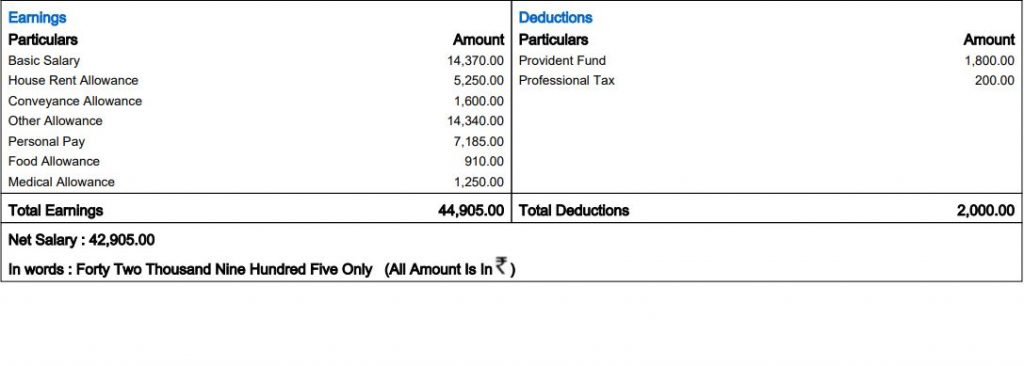
This HRA component is taxable by default, which means you need to pay income tax on HRA.
But if you stay on Rent and pay rent for the accommodation, you can declare that you stay on rent and claim this HRA amount to save income tax.
There are certain HRA calculations you need to do to reach the amount you can claim in HRA.
Below are the calculations on HRA limit to be claimed:
- Actual HRA received
- Rent minus 10% Basic Salary + DA
- 40% of Basic Salary + DA (non metro city) or 50% of Basic Salary + DA (metro city)
The minimum of above 3 calculations will be considered to be claimed as HRA amount. And this HRA amount can be reduced from your gross income to save income tax.
You can also use this HRA calculator to check your HRA amount to be claimed.
ALSO READ: HRA Exemption Calculations with Examples
5. Section 24(b)
Section 24 includes the home loan interest amount that you pay back in the form of home loan EMI, for which the limit is Rs. 2,00,000 in a financial year.
So if you have home loan and pay interest in the form of EMI, you can claim the interest portion under Section 24 and the limit is Rs. 2,00,000.
Also, the principal portion of home loan can be claimed under Section 80C for which the limit is Rs. 1,50,000 which we have already discussed above.
You can easily know how much interest amount you are paying in your home loan by using the Home Loan Excel Calculator.
Conclusion
So these are 6 tax saving options to save income tax with old tax regime. You should get your taxable income to below Rs. 5 Lakh so that you can make use of Tax Rebate 87A which provides Rs. 12,500 tax relief with old tax regime.
Tax Rebate 87A is also available with new tax regime when taxable income is below Rs. 7 Lakh with tax rebate of maximum Rs. 25,000, but ne wtax regime does not provide majority of the tax saving options to reduce tax liability.
Some more Reading:
- Tax Rebate 87A Explained
- Rs. 2000 SIP in Sensex for 15 Years
- 8 Best Investment Options for Monthly Income
Frequently Asked Questions
How can I reduce my salary tax?
You can reduce tax on salary by making investments in various sections and claiming deductions against those deductions. Popular investment sections include Section 80C, Section 80D, Section 80CCD(1B), etc. which have various options of investments and deductions mentioned above.
Is 15 lakhs zero tax?
If you can get your taxable income below Rs. 5 lakh with old tax regime, by making investments and claiming deductions, than your income tax will be zero. For 15 lakhs income, you need to make 10 lakh investments / deductions, to get your taxable income below Rs. 5 lakh, and tax rebate 87A will make your income tax as zero in such case.
How to pay 0 tax on 10 lakh salary?
For 10 lakh salary in a financial year, make various investments and claim deductions with old tax regime, to get your taxable income to below Rs. 5 lakh. This will help you to take tax rebate 87A benefit, according to which you don’t have to pay any tax with taxable income of Rs. 5 lakh or below.
Which amount is tax free?
If your income is up to Rs. 2.5 lakh, the entire amount is tax free. With old tax regime, your income up to Rs. 5 lakh is tax free and with new tax regime, income up to Rs. 7 lakh is tax free for FY 2023-24.
Save Home Loan Interest Amount!
Use Home Loan Excel Calculator that will help you to Save Interest Amount on Home Loan EMI.
Click below button to download Home Loan EMI and Prepayment Calculator in Excel:
Watch how Home Loan Calculator in Excel Works
Income Tax Calculator App – FinCalC
For Income Tax Calculation on your mobile device, you can Download my Android App “FinCalC” which I have developed for you to make your income tax calculation easy.
What you can do with this mobile App?
- Calculate Income Tax for FY 2025-26 and previous FY 2024-25
- Enter estimated Investments to check income tax with Old and New Tax Regime
- Save income tax details and track regularly
- Know how much to invest more to save income tax
- More calculators including PPF, SIP returns, Savings account interest and lot more
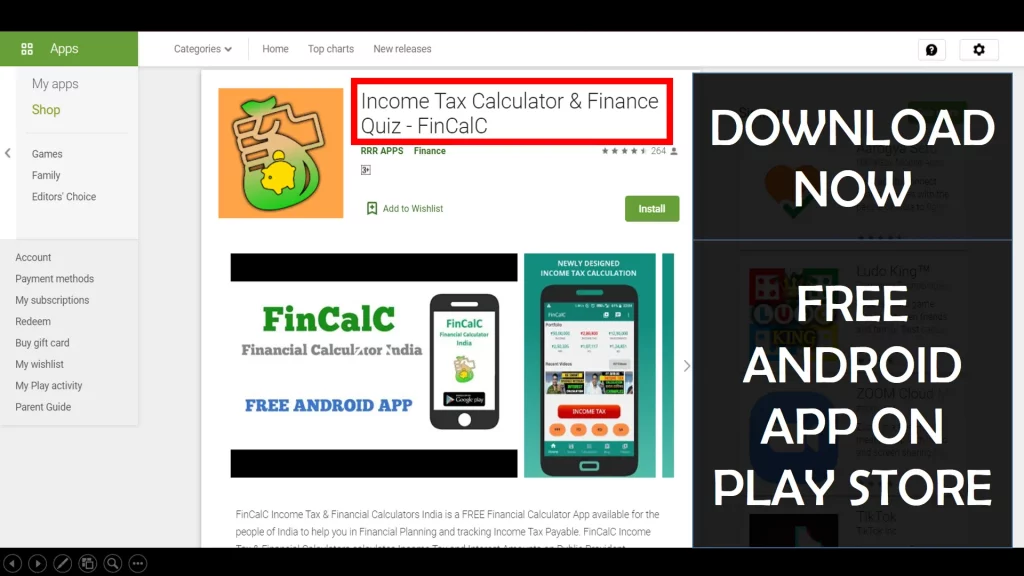
Use Popular Calculators:
- Income Tax Calculator
- Home Loan EMI Calculator
- SIP Calculator
- PPF Calculator
- HRA Calculator
- Step up SIP Calculator
- Savings Account Interest Calculator
- Lump sum Calculator
- FD Calculator
- RD Calculator
- Car Loan EMI Calculator
- Bike Loan EMI Calculator
- Sukanya Samriddhi Calculator
- Provident Fund Calculator
- Senior Citizen Savings Calculator
- NSC Calculator
- Monthly Income Scheme Calculator
- Mahila Samman Savings Calculator
- Systematic Withdrawal Calculator
- CAGR Calculator
I’d love to hear from you if you have any queries about Personal Finance and Money Management.
JOIN Telegram Group and stay updated with latest Personal Finance News and Topics.
Download our Free Android App – FinCalC to Calculate Income Tax and Interest on various small Saving Schemes in India including PPF, NSC, SIP and lot more.
Follow the Blog and Subscribe to YouTube Channel to stay updated about Personal Finance and Money Management topics.

